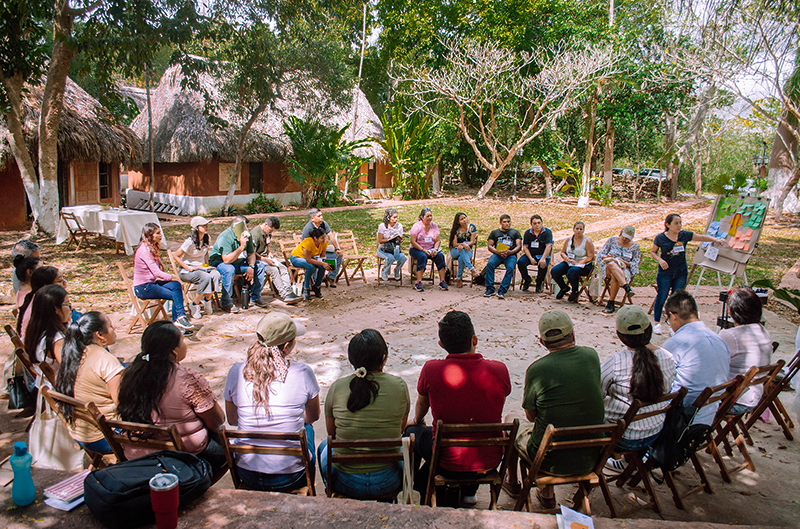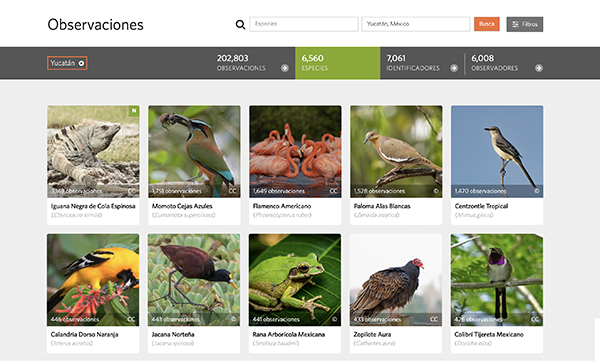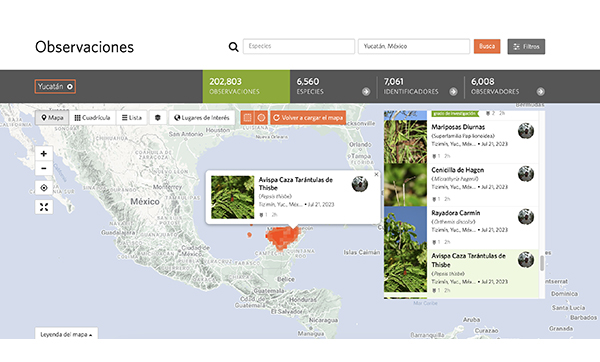SAL A PAJAREAR
Since 2008, Claudia y Roberto Hernandez Foundation began with the program Sal a Pajarear in 10 communities on the Jalisco coast. In 2014, the program began in Yucatan, with the support of Pedro y Elena Hernandez Foundation and Transformacion Arte y Educacion (TAE) Foundation. Since then, it has expanded to the neighbouring states of Campeche and Quintana Roo.
The program promotes knowledge and care of birds and their habitats in children from 9 to 12 year-old, through birding hikes to get to know them with community volunteer guides using guides and binoculars. The learning experience is complemented with drawing contests, handicrafts, and playful activities such as memory games, lotteries, and jigsaw puzzles. Several teaching materials have been developed to be used at home.

Yucatan community children watching birds
©Waldemar Santamaría

The peninsula is home to three motmot species and they are known as Toh in Maya
©Luis Trinchán
At present, there have been over 1,112 children participating from 55 communities in the Yucatan peninsula. 145 volunteer instructors have been trained. Today, there are 23 active communities with 477 children and and 74 volunteer instructors. Through the interest of the children and volunteers, the parents, and communities also become involved.
Every year there are volunteer meetings to share experiences and to develop annual activity plans. The meetings take place alternating in different communities. Children festivals, anniversaries and events are also organized.
The information gathered from bird observations is uploaded to the citizen science platform aVerAves / eBIrd, available to anyone interested. 4,092 bird lists with 424 species have been uploaded. The whole society has acces to the information that the program gathers.
Sal a Pajarear initiative in the Yucatan peninsula works in collaboration with TAE Educación, Baktún, pueblo maya.







